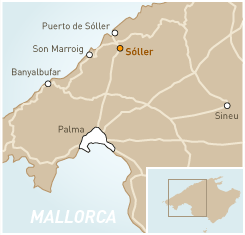The production process
In traditional procedures, the olives are distributed on the ground of the olive mill, where they are then
shred by motorised cone-shaped rollers. Afterwards, this mass is piled between presses and then, under high
pressures, a liquid is extracted consisting of oil and water. Afterwards, the liquid rests until two layers
separate; the oil on top and the water layer at the bottom.
Continuously, the olives pass through different phases of production: At first, foreign substances such as leaves are removed before the fruits are washed thoroughly. In a kind of grinder, the olives and their kernels are crushed producing a pasty mass. By means of a centrifugation, the oil is at last extracted from the olive's fruit juice. To facilitate the extraction, water is added to the juice in the process of centrifugation. The freshly pressed olive oil is still green as grass, cloudy and inedible. Only after a rest of several weeks, the contained suspended solids settle.
Continuously, the olives pass through different phases of production: At first, foreign substances such as leaves are removed before the fruits are washed thoroughly. In a kind of grinder, the olives and their kernels are crushed producing a pasty mass. By means of a centrifugation, the oil is at last extracted from the olive's fruit juice. To facilitate the extraction, water is added to the juice in the process of centrifugation. The freshly pressed olive oil is still green as grass, cloudy and inedible. Only after a rest of several weeks, the contained suspended solids settle.
Sóller
Sóller - the mountain village The mountain olive harvest The production process The Tafona (Olive oil mill) of Can Det
